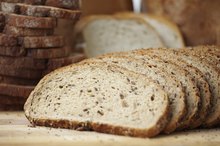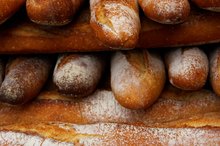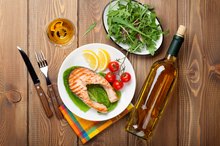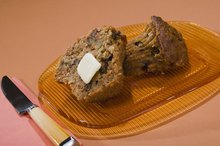Why Are Fats Important in a Diet?
Fat is frequently disparaged as a cause of rising obesity rates and problems associated with extra weight, such as heart disease, high cholesterol and diabetes, making many people think they need to avoid fat. In fact, fats are important in your diet for a number of reasons.
Function
Fats provide your body with energy and provide storage spots for energy in the body. Fat also helps move the vitamins A, D, E and K through your bloodstream and absorb them into your body. Fat also provides insulation for body temperature regulation by filling up your body's adipose tissue. The essential fatty acids in fats also play a role in brain development, blood clotting and managing inflammation.
- Fats provide your body with energy and provide storage spots for energy in the body.
- Fat also provides insulation for body temperature regulation by filling up your body's adipose tissue.
Significance
Insulin Resistance Diet Plan
Learn More
Because your body can't make certain essential fatty acids, including linoleic and linolenic acid, it relies on your diet to provide them. Fat is the most powerful food energy source, with 9 calories of energy in every gram of fat—more than twice as much energy as proteins or carbohydrates provide. Because calories from carbohydrates are quickly burned—usually within the first 20 minutes of exercise—your body relies on its fat stores for energy.
Types
Fats can be divided into three classes: saturated fats, trans fats and unsaturated fats. Saturated fats, usually found in animal products, including meat and milk, increase your body's levels of bad cholesterol. Trans fats, which form when vegetable oil hardens, are found in fried foods, processed foods, spreads and baked goods. Saturated fats and trans fats should be limited in a healthy diet. Unsaturated fats, on the other hand, found in fish, nuts, olive oil, canola oil and vegetable oil, are considered "good fats."
- Fats can be divided into three classes: saturated fats, trans fats and unsaturated fats.
- Trans fats, which form when vegetable oil hardens, are found in fried foods, processed foods, spreads and baked goods.
Recommendations
What Is the Average Amount of Fat Grams a 14-Year-Old Should Have a Day?
Learn More
Your fat intake should make up no more than 35 percent of your daily calories. For a 2,000-calorie diet, that translates to fewer than 78 grams of fat per day. Choose healthy, unsaturated fats instead of saturated fats or trans fats.
- Your fat intake should make up no more than 35 percent of your daily calories.
- For a 2,000-calorie diet, that translates to fewer than 78 grams of fat per day.
Considerations
While fat is an important part of a healthy diet, it's as important not to get too much as it is not to get too little. Eating too much fat can lead to weight gain and health problems, including high cholesterol. Limiting your daily fat intake to the recommended allowance helps ensure you get fat's benefits without its potential problems.
Related Articles
References
Writer Bio
Holly Roberts is an award-winning health and fitness writer whose work has appeared in health, lifestyle and fitness magazines. Roberts has also worked as an editor for health association publications and medical journals. She has been a professional writer for more than 10 years and holds a B.A. in English and an M.A. in literature.









